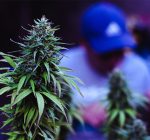Maximizing Efficiency: Tips for an Energy-Efficient Power Supply
- 159 Views
- Blogger
- July 26, 2023
- Technology
Introduction
In an era where sustainable practices and energy conservation are becoming increasingly crucial, maximizing efficiency in our power supply systems is of utmost importance. With growing energy demands and concerns over environmental impact, adopting energy-efficient practices can significantly contribute to reducing our carbon footprint while also lowering operational costs. This guide aims to provide essential tips and insights to help individuals and organizations optimize their power supply systems and achieve greater energy efficiency. By implementing these strategies, we can pave the way for a greener and more sustainable future.
Definition and concept of power supply efficiency
Power supply efficiency refers to the ratio of output power to input power in an electrical power supplies system. It measures how effectively a power supply converts incoming electrical energy into usable output power. Typically expressed as a percentage, power supplies efficiency indicates the amount of energy wasted or lost during the conversion process.
The concept of power supply efficiency is rooted in the fact that no power conversion process is perfect. Power supplies, such as AC-DC converters or DC-DC converters, experience losses due to factors like resistance, heat dissipation, and other internal inefficiencies. These losses result in wasted energy, which not only increases operational costs but also contributes to environmental concerns.
Efficiency is a crucial parameter when evaluating power supplies as it directly affects the amount of electrical energy required from the source to deliver a specific output power. Higher efficiency power supplies minimize energy waste, reduce heat generation, and decrease the strain on energy resources.
Efficiency standards and regulations are often in place to encourage the use of more efficient power supplies in various applications, from consumer electronics to industrial systems. Improving power supply efficiency is an essential step towards achieving sustainable and energy-conscious practices while ensuring reliable power delivery.
Energy-Saving Tips for Power Supply Usage
Choose High-Efficiency Power Supplies:
When selecting a power supply, opt for models with high energy efficiency ratings. Look for power supplies that comply with recognized efficiency standards such as 80 PLUS certification for computer power supplies. Higher efficiency power supplies convert more of the input power into usable output power, resulting in reduced energy waste.
Right-Sizing the Power Supply:
Ensure that the power supply you choose is appropriately sized for your specific needs. Overly large power supplies not only waste energy but also generate more heat. On the other hand, an undersized power supplies may operate inefficiently or struggle to meet the power demands, leading to reduced efficiency. Calculate the power requirements accurately to select a power supplies with an appropriate wattage rating.
Implement Power Management Features:
Many electronic devices and computers come with built-in power management features. Activate these features to optimize energy usage. For example, enable sleep or standby modes for computers and set them to automatically power down after a period of inactivity. Utilize power-saving options in monitors, printers, and other peripherals to minimize energy consumption during idle periods.
Unplug or Use Power Strips with Switches:
Standby power consumption, also known as “vampire power,” occurs when devices are plugged in but not in use. Unplug chargers, appliances, and electronics when they are not actively being used or employ power strips with switches. With power strips, you can easily turn off multiple devices simultaneously, eliminating standby power consumption.
Optimize Cooling and Ventilation:
Proper cooling and ventilation are vital for maintaining power supplies efficiency. Ensure that the power supply and surrounding components have adequate airflow to dissipate heat efficiently. Keep ventilation areas free from dust and obstructions that can impede airflow and cause overheating, as this can decrease power supplies efficiency.
Regular Maintenance and Cleaning:
Regularly inspect and clean power supplies components to prevent dust buildup, which can hamper heat dissipation and lead to reduced efficiency. Follow manufacturer guidelines for maintenance and cleaning procedures to ensure optimal performance.
Consider Renewable Energy Sources:
If feasible, consider integrating renewable energy sources such as solar panels or wind turbines into your power supplies system. Renewable energy sources can help reduce dependence on traditional power grids and decrease the environmental impact associated with energy generation.
Educate and Promote Energy-Conscious Practices:
Encourage users and employees to adopt energy-conscious practices. Promote turning off lights, unplugging chargers, and shutting down devices when not in use. Educate individuals on the importance of energy conservation and its positive impact on both cost savings and the environment.
Troubleshooting Common Power Supply Efficiency Issues
Power supply efficiency issues can arise due to various factors.
Overloading:
Overloading occurs when the power supply is continuously operating at or near its maximum capacity. This can lead to reduced efficiency and potentially damage the power supplies. Troubleshoot this issue by:
- Check the power supply’s wattage rating and ensure it is sufficient for the connected devices’ power requirements.
- Distribute the load evenly among multiple power supplies if applicable.
- Remove any unnecessary devices or components that may be drawing excess power.
Voltage Regulation:
Inefficient voltage regulation can result in fluctuations in the output voltage, impacting system performance and efficiency. To troubleshoot voltage regulation issues:
- Use a multimeter to measure the output voltage of the power supplies. Compare it to the recommended voltage levels for the connected devices.
- If the output voltage is consistently outside the acceptable range, consider replacing the power supply with a more reliable and regulated one.
- Ensure that the power supply’s voltage selector switch is set correctly for your region’s voltage standards.
Poor Power Factor Correction (PFC):
Power Factor Correction helps improve power supply efficiency by minimizing reactive power and optimizing the power factor. If your power supplies has poor PFC, consider the following troubleshooting steps:
- Check if the power supply has active PFC or passive PFC. Active PFC is generally more efficient.
- Verify that the power supplies is correctly connected to the electrical system and grounded properly.
- Consider upgrading to a power supplies with improved PFC capabilities for better efficiency.
Inadequate Cooling:
- Overheating can significantly impact power supply efficiency and reliability. To troubleshoot cooling issues:
- Ensure that the power supply’s cooling fans are clean and functioning properly. Clean any dust or debris that may have accumulated.
- Verify that there is sufficient airflow around the power supplies. Clear any obstructions that may hinder ventilation.
- Consider adding additional cooling solutions, such as case fans or liquid cooling, to maintain optimal operating temperatures.
Aging or Faulty Components:
Over time, power supply components can degrade or fail, leading to reduced efficiency. Troubleshoot this issue by:
- Inspect the power supplies for any visible signs of damage or component failure, such as bulging capacitors or burnt components. If found, consider replacing the power supply.
- If the power supplies is older and experiencing efficiency issues, consider upgrading to a newer, more efficient model.
- Consult a professional technician or contact the power supplies manufacturer for further troubleshooting or repair options.
Conclusion
In conclusion, maximizing power supply efficiency is crucial for reducing energy waste, lowering operational costs, and promoting sustainable practices. By implementing the energy-saving tips mentioned earlier, such as choosing high-efficiency power supplies, right-sizing the power supplies, and utilizing power management features, individuals and organizations can optimize their power supplies usage.
Additionally, troubleshooting common power supplies efficiency issues, such as overloading, voltage regulation problems, poor power factor correction, inadequate cooling, and aging components, helps maintain optimal efficiency levels and prevent performance issues.
Efficient power supply usage not only benefits the environment by reducing carbon footprint but also contributes to long-term cost savings. By adopting energy-conscious practices and promoting awareness among users and employees, we can collectively work towards a greener and more sustainable future.





